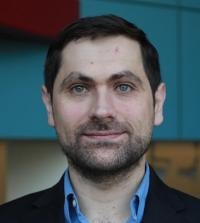UC Davis Electrical and Computer Engineering Professor Juan Sebastian Gomez-Diaz Receives Department of Defense Grant for Miniaturized Infrared Sensing Technology

UC Davis electrical and computer engineering (ECE) professor Juan Sebastian Gomez-Diaz received a Department of Defense grant for research into ultrathin, ‘smart’ infrared sensors that could revolutionize infrared sensing technology.
Health and Other Applications
Infrared sensors can identify substances, including metabolites, gasses, and various chemicals, through the unique wavelength patterns of light absorbed by each substance. “Many substances have a distinctive ‘absorptive fingerprint’ and could potentially be tracked and detected by miniature and wearable devices. This would have applications for health monitoring, gas detection, and identifying hazardous materials,” says Gomez-Diaz.
Technical Leaps Forward
The sensors are based on nanomechanical resonators, similar to the technology already used in smartphones, covered by nanostructures. “The use of nanotechnology permits us to detect unique infrared signals with high precision”, says Gomez-Diaz. One of the main goals of the project is to develop nanostructures that could reconfigure themselves by applying a voltage, which will permit a single device to detect many distinct signals. “Demonstrating reconfigurable, spectrally selective, and miniaturized infrared sensors would be a significant step forward in the field of infrared sensing” states Gomez-Diaz. To this purpose, the lab proposes to use graphene, a two-dimensional material that can change its electromagnetic response by applying a low voltage.
The technology will also aim to reduce the ‘noise’ (extraneous signals detected by the sensors that complicate observations). Optimal sensors operate at very low temperatures to decrease noise; typically, this requires expensive and bulky equipment. To develop miniaturized sensors at room temperature, the Gomez-Diaz lab is applying a differential approach combining reference and sensing units within the same chip, which enhances the overall detection.
Gomez-Diaz expects this sensing technology to become affordable and well-suited for mass production. Gomez-Diaz’s lab is currently testing preliminary prototypes of this technology for gas, chemical, and cancer detection. For example, infrared sensing could be very helpful in quickly analyzing biofluids such as saliva or blood and identifying several types of cancers.

